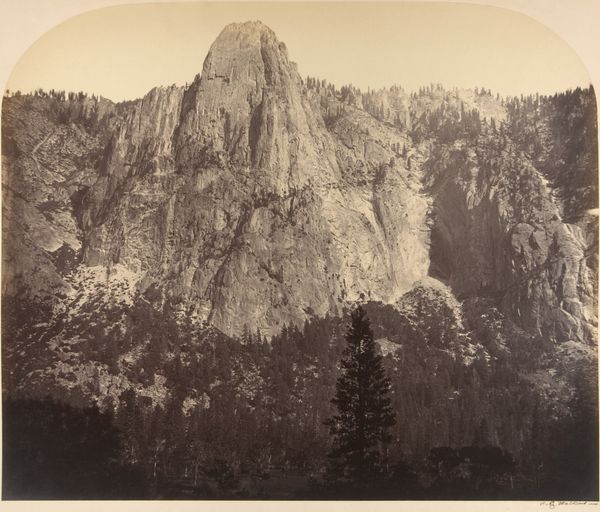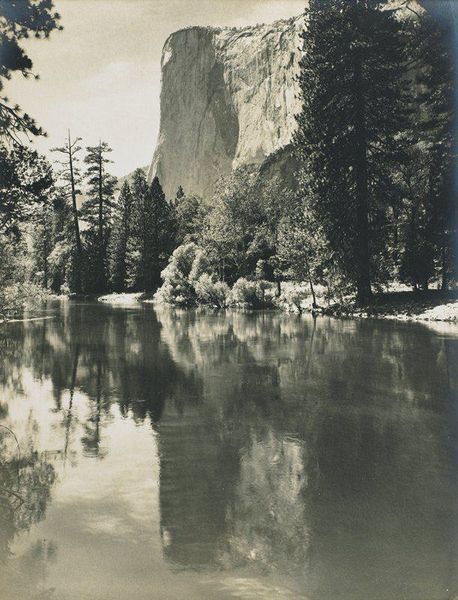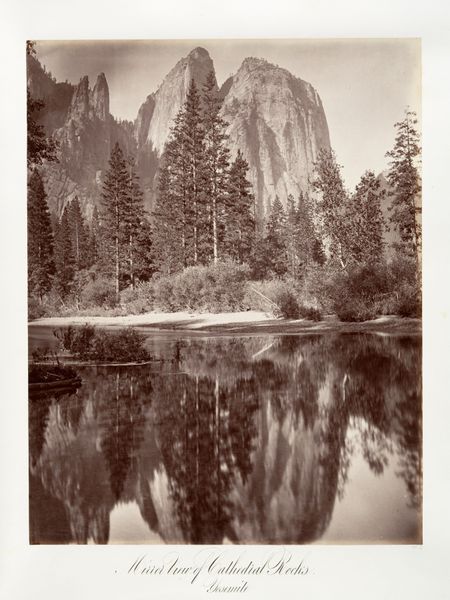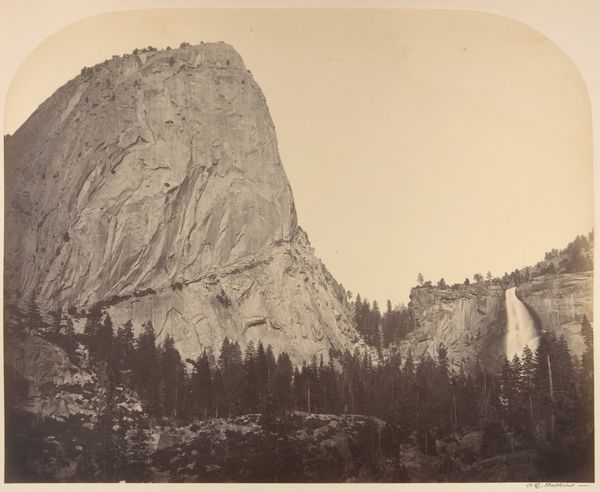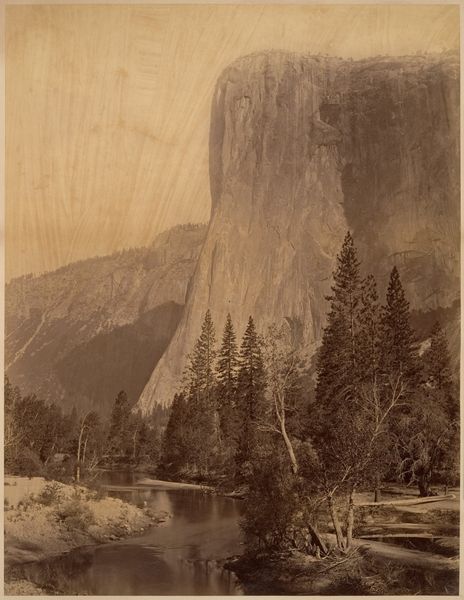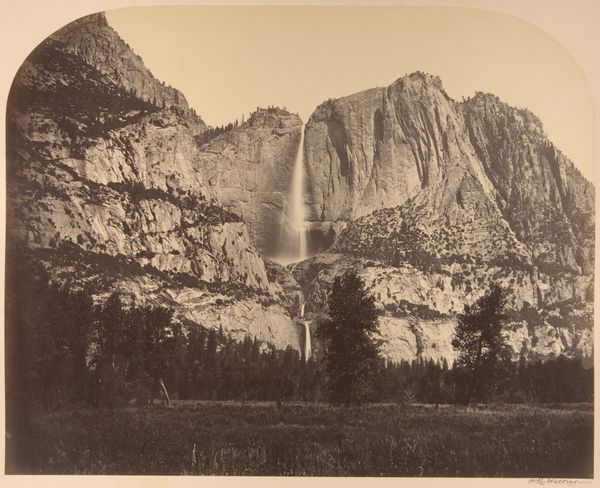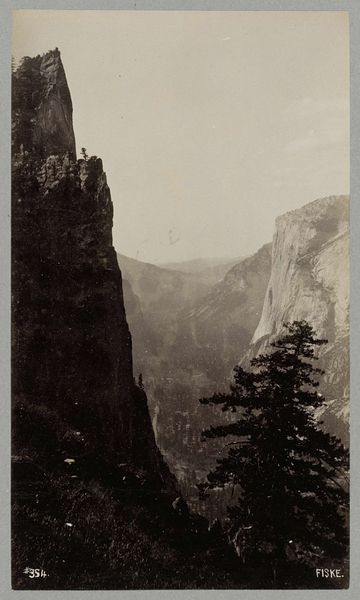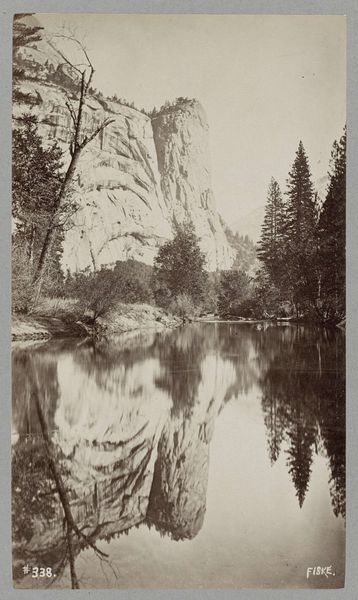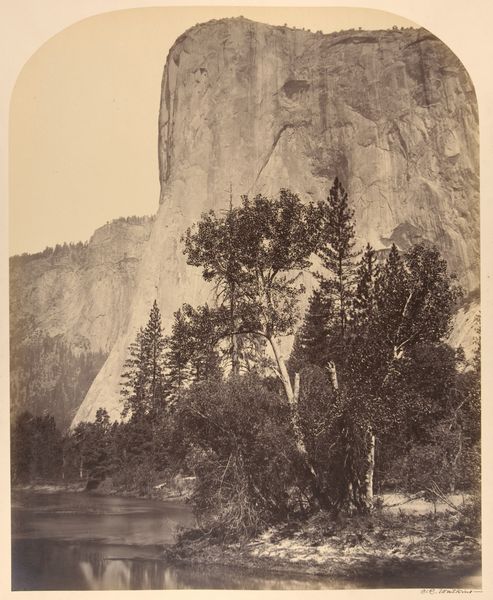
photography
#
landscape
#
river
#
luminism
#
photography
#
mountain
#
hudson-river-school
#
remaining negative space
Copyright: Public Domain
Editor: So, this is Carleton Watkins’ "Washington Tower, Yosemite," taken between 1870 and 1874. It's a landscape photograph, and the detail is just stunning. The reflection of the mountains in the river...it feels very serene. How would you approach thinking about this photograph? Curator: Immediately, I consider the material conditions of its production. This wasn't a simple snapshot; it was made using the wet plate collodion process. Think about the labor involved – preparing the chemicals, transporting the darkroom tent to Yosemite, the exposures... all before photography became easily accessible. How does this impact your view of the photograph? Editor: Wow, I hadn’t thought of it like that. Knowing how laborious the process was makes me appreciate the image more. The scale too, becomes a testament to his commitment, I guess? Curator: Precisely. And what about the social context? These photographs were instrumental in promoting Yosemite as a national park, inviting consumption and preservation through the dissemination of images. This land was not simply “discovered”; it was known and lived on by indigenous peoples. Does Watkins’ photograph acknowledge or erase that history? Editor: That's a critical point. It highlights the role of photography in shaping our understanding and relationship with the natural world, often overlooking its pre-colonial history. What are we consuming when we look at this “untouched” landscape? Curator: Exactly. Watkins' labor intersects with promotional campaigns and shifts in environmental policy. It invites us to critically assess how aesthetics become intertwined with commerce and control. Editor: So it’s not just about appreciating the pretty picture but also about understanding the layers of labor, intent, and historical context involved in its making and consumption. I learned that there is no "pretty picture", if not contextualized! Curator: Absolutely! And seeing beyond the surface helps us better understand both the image and our own role in its continuous construction and reinterpretation.
Comments
No comments
Be the first to comment and join the conversation on the ultimate creative platform.


